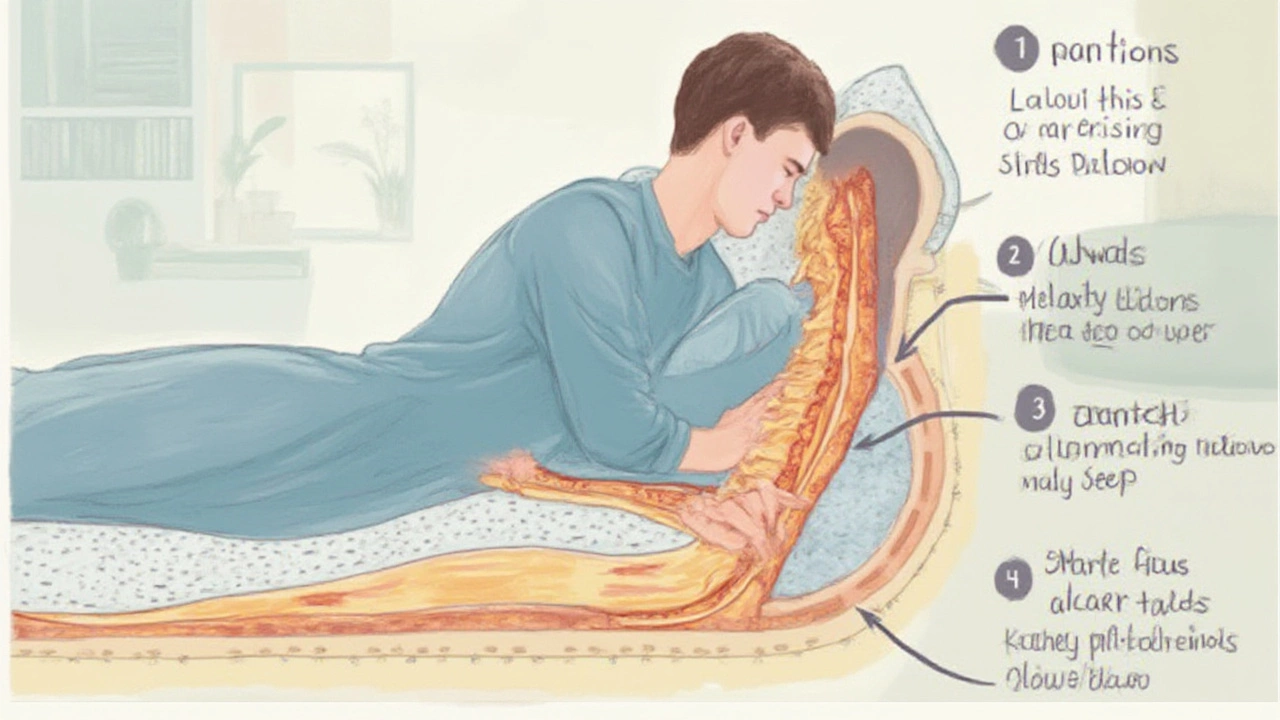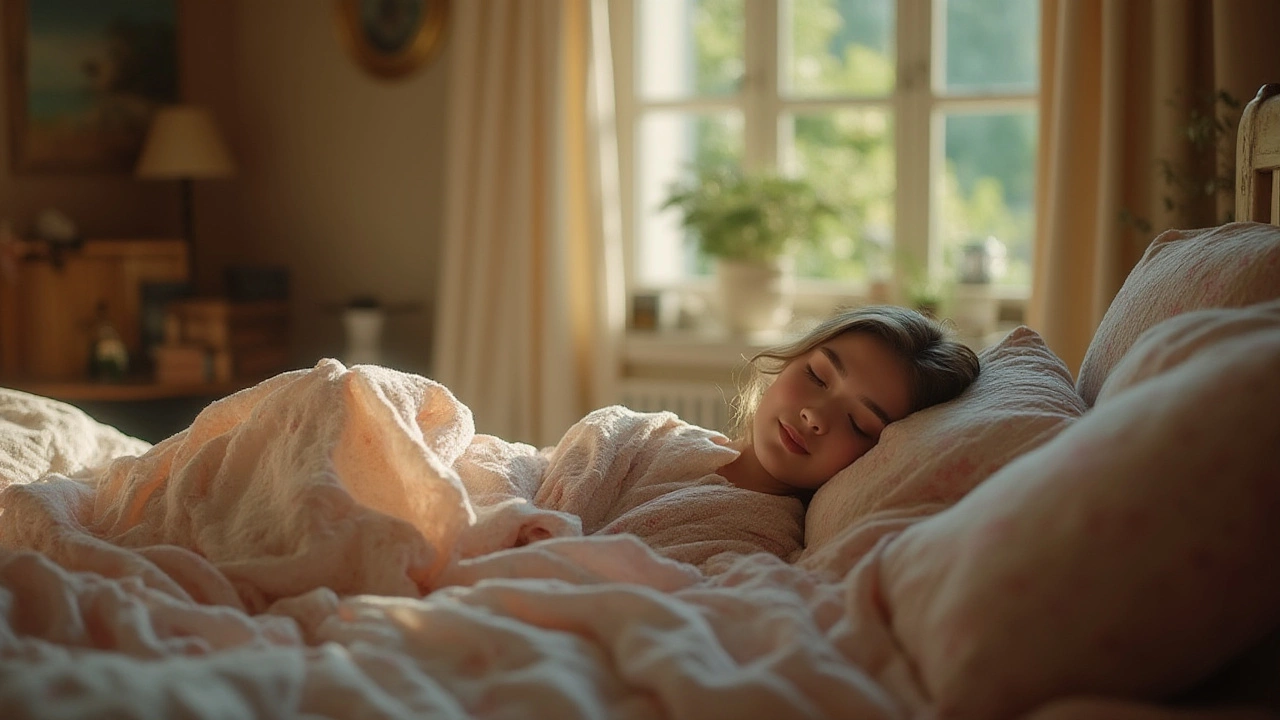Truth bomb: most of us rave about getting eight hours, but pay zero attention to the way we actually sleep. Sounds minor, but your sleeping position can quietly wreck—or totally rescue—your back, breathing, and even your mood. Ever woken up with that crick in your neck or a weird ache in your lower back? Yeah, blame your overnight acrobatics. The healthiest sleeping position isn’t about looking pretty or mimicking some yoga post—it's the sneaky, science-backed trick behind waking up pain-free, breathing easier, and actually feeling refreshed. Loads of people swear by a favorite way to sleep, but what does your body really want while you’re off in dreamland?
How Sleeping Position Impacts Your Body
Let’s lay it out: the way you position yourself in bed changes just about everything, from your spine alignment to how well your lungs work. Most of us slot into one of three main camps: back sleeping, side sleeping, and stomach sleeping. Turns out, each comes with its own perks and pitfalls—some a lot more serious than others.
Start with side sleeping. Not only is this the most popular worldwide (about 60% of adults favor it, according to a UK National Sleep Survey), but it’s pretty friendly for folks who snore, have sleep apnea, or tend to get acid reflux after a big curry. Lying on your left side is rumoured to help even more—easing digestion and promoting better blood flow, especially for pregnant women. But if you pile your knees in awkward angles or curl up too tightly, you could leave your hips screaming or wind up with numb hands thanks to compressed nerves.
Back sleeping gets high marks if you want full-on spinal alignment—it’s great for keeping pressure off sensitive joints and avoiding wrinkles (gravity does its magic, pulling your skin back and smoothing things out). But if you snore or deal with sleep apnea, this one can be a trap. When you lie flat, your tongue and soft tissues can block your airway, making breathing tougher—more so if you carry a bit of extra weight or have allergies ramping up congestion.
Stomach sleepers, let’s get real: it might feel comfy at first, but this position is the worst for your neck and lower back. You need to turn your head to breathe, which twists your spine and stresses neck muscles all night. Plus, sleeping face-down puts a squeeze on your organs and ramps up pressure on your joints. Studies from the American Chiropractic Association pin a higher rate of waking aches on chronic stomach sleepers.
So, what’s the healthiest sleeping position? Most experts—including the British Sleep Society—agree that sleeping on your side, especially the left, ticks the most boxes for the average person. It supports your spine’s natural curves, cuts snoring, makes digestion easier, and keeps acid reflux at bay. Still, the magic isn’t just in position—your mattress, pillow, and even arm placement matter just as much.

Choosing the Best Sleep Posture for You
Now the fun part: tailoring your sleep setup to actually fit your body. No two people snooze the same way, so your healthiest sleeping position might need a bit of personal tweaking.
If you’re a side sleeper, look for a firm, supportive mattress—the kind that keeps you “floating” instead of sinking in. It should cushion your shoulder and hip without letting your spine sag. Pillow choice is key: you want one thick enough to fill the space between your ear and mattress so your neck doesn’t bend awkwardly. Some people put a small pillow between their knees; it keeps hips square and reduces lower back tension. Don’t forget arm position—hugging a pillow or resting your lower arm out straight usually eases shoulder strain.
Back sleepers, you need a medium-firm mattress—too soft and your hips sink, inviting back pain; too hard and your tailbone protests by morning. Opt for a flatter pillow that cradles just beneath your head and neck, not the upper shoulders. Tucking a thin pillow or rolled towel under your knees can ease lumbar pressure and neutralize your spine. If you tend to snore, try propping up your torso slightly with an adjustable pillow to keep airways happier.
If you can’t kick the stomach sleeping habit, all is not lost—but you’ll need to get creative. Use the thinnest pillow possible (or go pillow-free) so your neck’s not cranked up. Placing a pillow under your pelvis offers some back support, but you might want to cheat toward a halfway side position. Sometimes, a body pillow helps train yourself into less twisting, less risky positions. Just know: making little tweaks over time is your friend here. Trying to force a whole new position overnight rarely works—your body rebels, and you’re wide awake at 3 a.m.
Mismatched bedding can sabotage even the best intentions. An old, saggy mattress drags your posture way off, no matter how carefully you arrange your limbs. Mattresses need a swap about every 7-8 years. For pillows, look for memory foam or latex if you need solid support, or hybrid styles if you’re a restless flipper. Try bedding made from natural fibers—like cotton or bamboo—if you run hot or wrestle with allergies. And never underestimate the magic of fresh, cool sheets—the little comforts make a surprising difference in staying settled while you sleep.
Here’s an eye-opener: a 2023 survey by King’s College London found that people who invested in ergonomic pillows and proper mattress toppers reported a 30% improvement in sleep quality and a 20% drop in morning aches compared to those sticking with bargain bedding. Simple upgrades pay off in spades.

Pro Tips and Surprising Facts for the Best Sleep
Here’s where the rubber meets the road—those bits and bobs that turn theory into actual, blissful shut-eye. For starters, don’t overlook your pre-bed routine. Anxious brains make for restless bodies, no matter how you position yourself. Doing a bit of stretching before bed can loosen tense muscles and make it easier to settle into that ideal position. Try a gentle side-lying child’s pose or hug your knees to your chest—these moves prep the spine and relax the hips, priming you for a comfier night.
Temperature plays a sneaky role too. Most sleep science shows that a cooler room (about 16-18°C, or 60-65°F) helps your body slip into deep sleep fast. If you get chilly, reach for a light blanket rather than cranking the heater. Wearing socks (yeah, it sounds odd) has actually been shown to help people fall asleep quicker by improving blood flow in your feet. This little trick works like a treat even if you’re not prone to cold toes.
Got a partner who tosses, turns, and steals the duvet? Consider separate blankets or even two mattresses if your sleep preferences clash. This can sound unromantic, but it’s a game-changer for uninterrupted, quality sleep—no more tug of war at 2 a.m.
For those who travel or crash on sofas regularly, try to stay consistent with your main sleep position and bring a travel pillow if you can. Suddenly swapping from a familiar setup to a bad fold-out sofa can really mess with your spine. Pay attention to your neck and hip alignment wherever you are—sometimes rolling up a towel or hoodie can sub in for a missing pillow in a pinch.
Now, about the tech—blue light from screens really does make a difference. Stash your phone away at least half an hour before sleep to let melatonin do its work. If you must scroll, try blue-light blocking glasses or set your device to night mode. And trust your instincts: if something feels off, your body will tell you. Stiff neck, sore hips, or pins and needles? Re-evaluate your setup, from mattress firmness to pillow thickness. Keep tweaking until you find your sweet spot.
Just how much does position matter for your bones and breath? Check this out:
| Position | Spinal Alignment | Snoring | Acid Reflux | Recommended for |
|---|---|---|---|---|
| Side (Left) | Good | Reduces | Reduces | Most adults, Pregnant |
| Back | Best | May Increase | May Increase | Back/Joint Pain Sufferers |
| Stomach | Poor | Neutral | Reduces | None (least recommended) |
If you’re struggling to sleep better, it never hurts to talk to a pro—especially if you have chronic pain, sciatica, or sleep apnea. Sometimes what feels natural is actually making things worse. There are physical therapists and sleep specialists right here in London who can tailor specific stretches, lifestyle tweaks, or gear to your exact needs.
At the end of the day, getting your sleeping position right is less about rigid rules and more about listening to your own body. The healthiest sleeping position for you is the one that ditches pain, clears your head, and feels blissful each morning. Don’t be afraid to change things up, experiment with pillows, or workshop your setup until you wake up actually feeling good. After all, the bed’s your kingdom—make it work for you.
